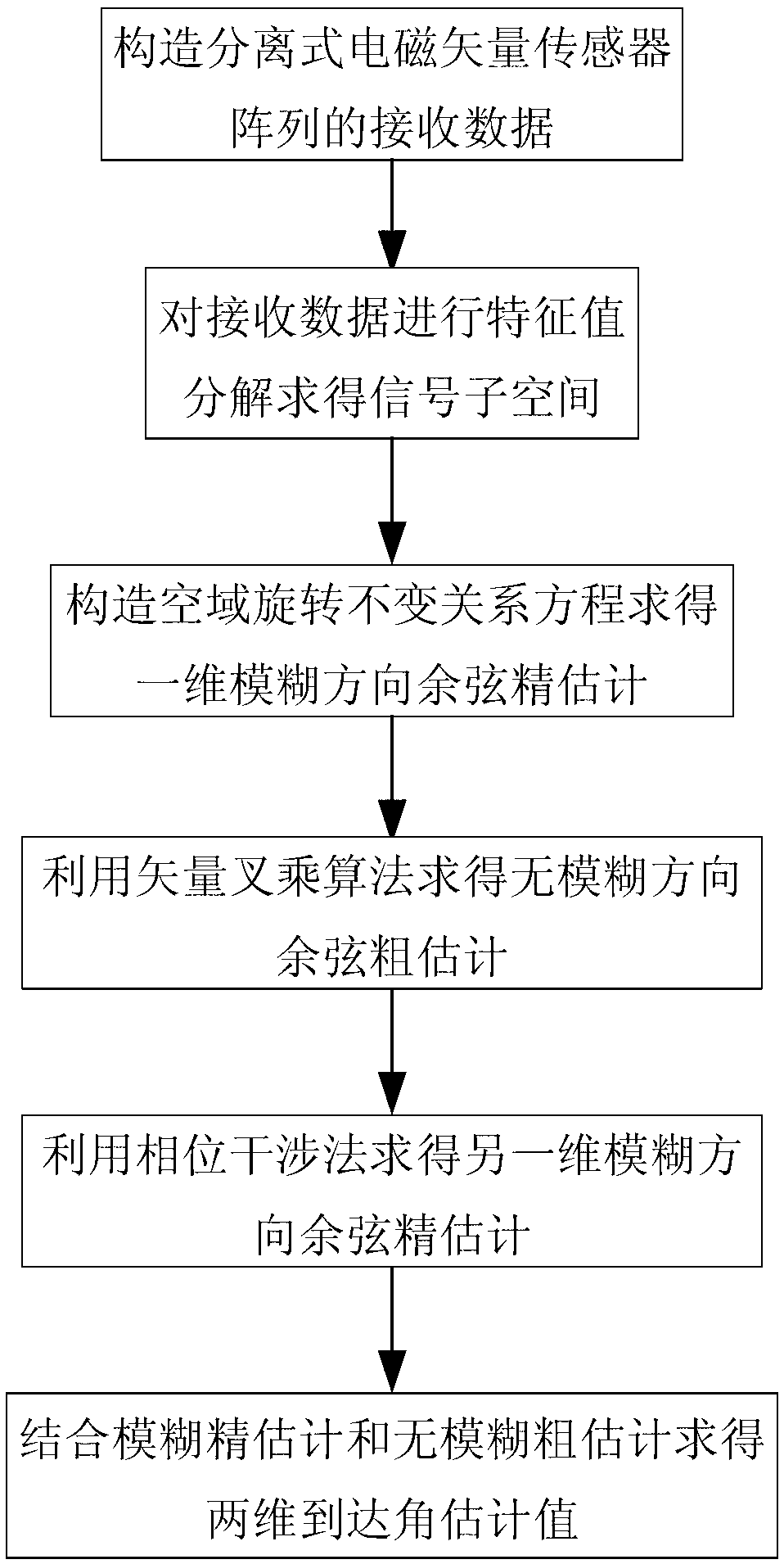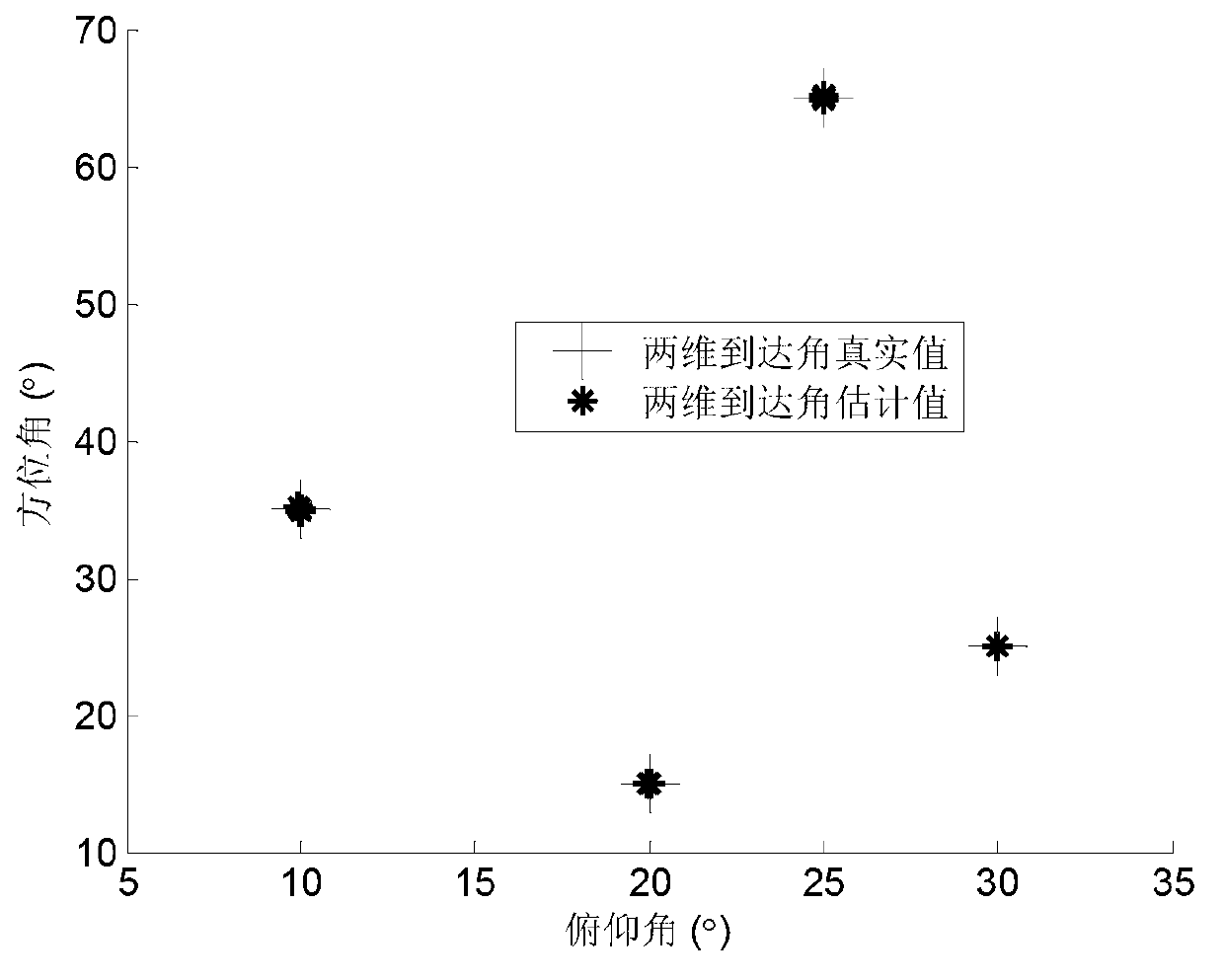Two-dimensional AoA (Angle of Arrival) estimation method based on separate electromagnetic vector sensor array
A sensor array and electromagnetic vector technology, applied in radio wave measurement systems, instruments, measurement devices, etc., can solve the problems of no time-domain rotation invariance, inability to apply two-dimensional arrival angle estimation, algorithm failure, etc., and achieve easy implementation , improved estimation accuracy, and low mutual coupling effects
- Summary
- Abstract
- Description
- Claims
- Application Information
AI Technical Summary
Problems solved by technology
Method used
Image
Examples
Embodiment Construction
[0022] refer to figure 1 , the specific implementation steps of the present invention are as follows:
[0023] Step 1: Extract the received data x(t) of the separated electromagnetic vector sensor array:
[0024] The present invention proposes a new array structure, such as figure 2 shown. From figure 2 It can be seen that the array manifold of the array structure proposed by the present invention is:
[0025] b = a ~ e j 2 π λ Δ x , x ...
PUM
 Login to View More
Login to View More Abstract
Description
Claims
Application Information
 Login to View More
Login to View More - Generate Ideas
- Intellectual Property
- Life Sciences
- Materials
- Tech Scout
- Unparalleled Data Quality
- Higher Quality Content
- 60% Fewer Hallucinations
Browse by: Latest US Patents, China's latest patents, Technical Efficacy Thesaurus, Application Domain, Technology Topic, Popular Technical Reports.
© 2025 PatSnap. All rights reserved.Legal|Privacy policy|Modern Slavery Act Transparency Statement|Sitemap|About US| Contact US: help@patsnap.com



